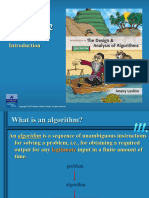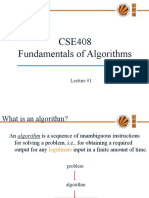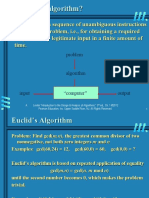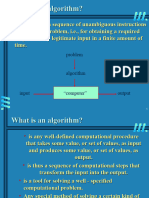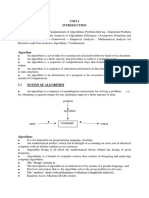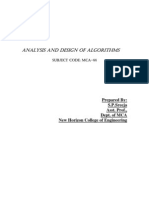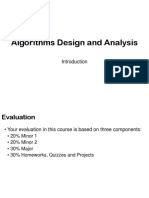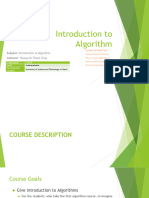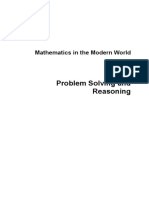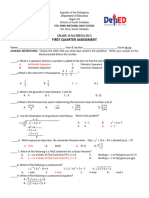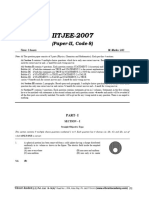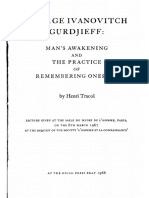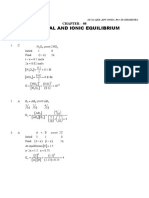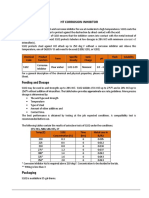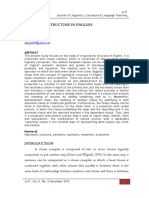0% found this document useful (0 votes)
21 views17 pagesLecture 1fundamental of Algorithms 1
The document introduces algorithms and their analysis. It defines what an algorithm is and gives examples like Euclid's algorithm. It discusses algorithm design techniques like brute force, divide and conquer and dynamic programming. It also covers analyzing algorithms for time and space efficiency and optimality.
Uploaded by
Yoshikage KiraCopyright
© © All Rights Reserved
We take content rights seriously. If you suspect this is your content, claim it here.
Available Formats
Download as PPT, PDF, TXT or read online on Scribd
0% found this document useful (0 votes)
21 views17 pagesLecture 1fundamental of Algorithms 1
The document introduces algorithms and their analysis. It defines what an algorithm is and gives examples like Euclid's algorithm. It discusses algorithm design techniques like brute force, divide and conquer and dynamic programming. It also covers analyzing algorithms for time and space efficiency and optimality.
Uploaded by
Yoshikage KiraCopyright
© © All Rights Reserved
We take content rights seriously. If you suspect this is your content, claim it here.
Available Formats
Download as PPT, PDF, TXT or read online on Scribd
/ 17




